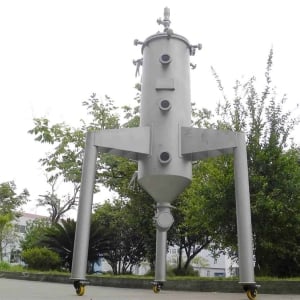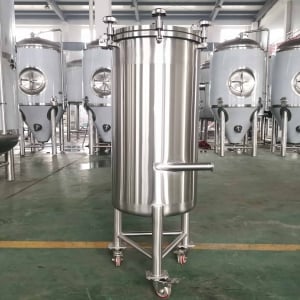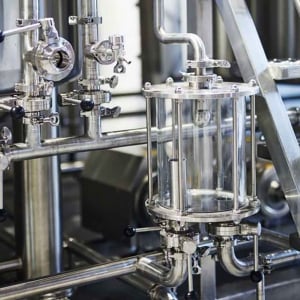Ultimate Guide to Grain Brewing Equipment
When you think about brewing your own beer, the first thing that might come to mind is the delicious end product. However, what about the equipment that gets you there? Let’s dive into the world of grain brewing equipment and explore everything from the basics to the nitty-gritty details. Whether you’re a hobbyist or planning to scale up to a microbrewery, this guide has you covered.
Overview of Grain Brewing Equipment
Brewing beer is an art form that combines science, precision, and creativity. The equipment you use can significantly influence the quality of your brew. This section provides a comprehensive overview of grain brewing equipment, focusing on the essentials you need to start or improve your brewing process.
Grain brewing, also known as all-grain brewing, involves using malted grains as the primary source of fermentable sugars, as opposed to malt extracts. This process offers greater control over the flavor, color, and body of the beer, making it a preferred method for serious homebrewers and professional brewers alike.
Key Grain Brewing Equipment
- Mash Tun: This is where the grains are mixed with hot water to convert starches into fermentable sugars.
- Boil Kettle: After mashing, the wort (unfermented beer) is boiled to sterilize and add hops.
- Fermenter: The vessel where yeast is added to the wort, turning it into beer through fermentation.
- Hot Liquor Tank: Used to heat and store water for the mashing process.
- Grain Mill: Crushes the grains to aid in the extraction of fermentable sugars.
- Wort Chiller: Rapidly cools the wort after boiling, preparing it for fermentation.
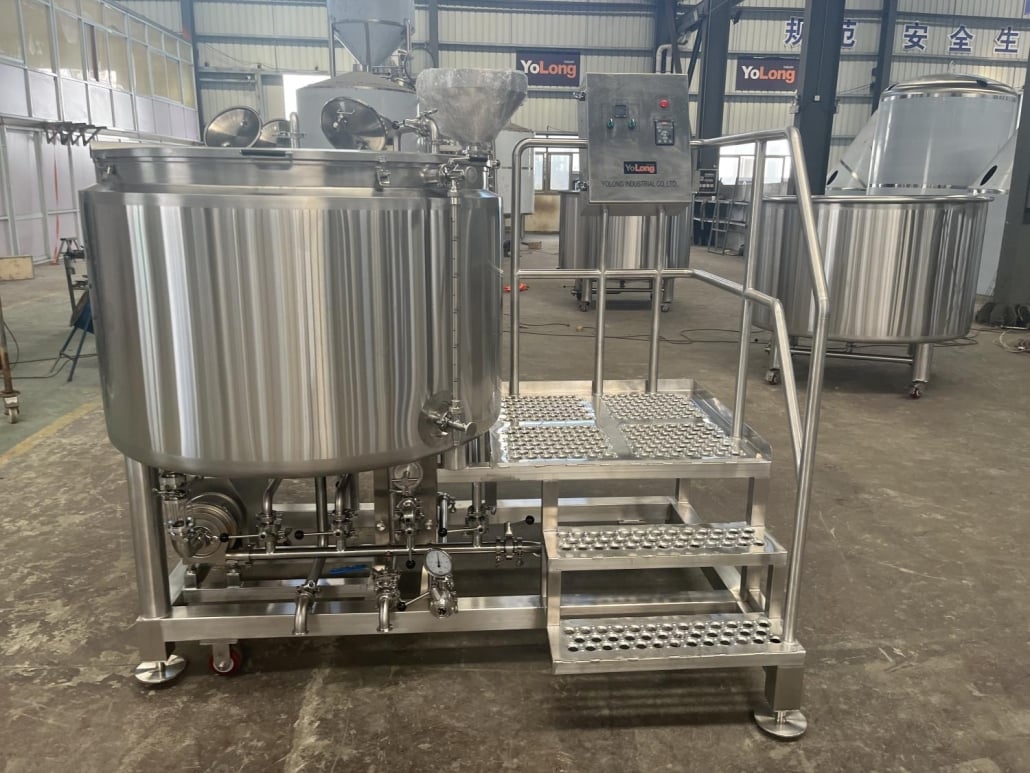
Equipment Guide
Understanding the purpose and function of each piece of equipment is crucial. Here’s a detailed look at the essential tools for grain brewing:
Mash Tun: This vessel, often insulated, holds the grain and water mixture (mash) at a specific temperature to convert starches into fermentable sugars. It’s usually equipped with a false bottom or manifold to separate the liquid wort from the grain.
Boil Kettle: A large pot where the wort is boiled, usually for 60 to 90 minutes. This process sterilizes the wort and allows for the addition of hops, which impart bitterness, flavor, and aroma to the beer.
Fermenter: Available in various materials (glass, plastic, stainless steel), the fermenter is where the magic of fermentation happens. Yeast is added to the cooled wort, converting sugars into alcohol and carbon dioxide.
Hot Liquor Tank (HLT): Stores and heats water for mashing and sparging (rinsing the grains to extract more sugars). Maintaining the correct water temperature is vital for the efficiency of the mashing process.
Grain Mill: Essential for crushing grains, a grain mill ensures that the starches inside the grain husks are accessible during the mash. The consistency of the crush can affect the efficiency and quality of the mash.
Wort Chiller: After boiling, the wort needs to be rapidly cooled to a temperature suitable for fermentation. A wort chiller, typically an immersion or plate chiller, speeds up this process, reducing the risk of contamination.
Types of Grain Brewing Equipment
To give you a clear picture of the variety of equipment available, here’s a table summarizing the different types and their details:
| Equipment Type | Description |
|---|---|
| Mash Tun | Insulated vessel for mashing grains, available in different sizes and materials (stainless steel, plastic). |
| Boil Kettle | Large pot for boiling wort, typically made of stainless steel or aluminum, with capacities ranging from 5 to 20 gallons. |
| Fermenter | Containers where fermentation occurs, available in glass, plastic, and stainless steel, with capacities from 1 gallon to several barrels. |
| Hot Liquor Tank | Used for heating and storing water for mashing and sparging, available in various sizes to match the brewing scale. |
| Grain Mill | Device for crushing grains, available in manual and electric models, with adjustable settings for different grain sizes. |
| Wort Chiller | Equipment to cool wort quickly, includes immersion chillers (copper or stainless steel coils) and plate chillers (compact and efficient). |
The Brewing Process
Let’s break down the brewing process into simple, easy-to-follow steps to help you understand how each piece of equipment plays a role.
- Mashing: Start by heating water in the hot liquor tank and transferring it to the mash tun. Add the crushed grains and maintain the temperature for about an hour. This allows the enzymes in the malt to convert starches into fermentable sugars.
- Lautering: After mashing, the mixture is transferred to a lauter tun (or the mash tun if it’s equipped for lautering). Here, the wort is separated from the spent grains. Additional hot water (sparge water) is sprayed over the grains to extract as much sugar as possible.
- Boiling: The collected wort is then transferred to the boil kettle and boiled for 60 to 90 minutes. Hops are added at various stages to contribute bitterness, flavor, and aroma.
- Cooling: After boiling, the wort needs to be cooled quickly to a temperature suitable for fermentation. A wort chiller is used for this purpose, reducing the risk of contamination and preserving the delicate flavors and aromas.
- Fermentation: The cooled wort is transferred to a fermenter, and yeast is added. Fermentation typically takes one to two weeks, during which the yeast converts sugars into alcohol and carbon dioxide.
- Packaging: Once fermentation is complete, the beer is packaged in bottles, cans, or kegs. Additional carbonation may be added before packaging.
Equipment Capacity, Spaces, Design, Layout, Customization
Choosing the right equipment involves considering various factors such as capacity, space, design, layout, and customization options. Here’s a detailed comparison:
| Parameter | Details |
|---|---|
| Capacity | Equipment ranges from small homebrew sizes (1-5 gallons) to commercial scales (7+ barrels). |
| Spaces | Compact designs for homebrewers vs. larger, more spacious setups for commercial breweries. |
| Design | Varies from basic, functional designs to advanced, automated systems with digital controls. |
| Layout | Efficient layout plans to optimize space and workflow, important for both homebrewers and commercial setups. |
| Customization | Options for customizing equipment based on specific brewing needs, including material choices, additional fittings, and automation. |
Suppliers and Price Range
Finding the right supplier can be crucial for obtaining high-quality equipment at a reasonable price. Here’s a summary of some prominent suppliers and their price ranges:
| Supplier | Equipment Offered | Price Range |
|---|---|---|
| MoreBeer | Homebrewing kits, grain mills, fermenters, and more. | $50 – $2,000 |
| Northern Brewer | Comprehensive range of brewing equipment, including starter kits and advanced setups. | $60 – $1,500 |
| Blichmann Engineering | High-end brewing systems and components for serious homebrewers and small breweries. | $200 – $5,000 |
| Ss Brewtech | Innovative stainless steel equipment, including fermenters, kettles, and accessories. | $150 – $3,500 |
| Anvil Brewing | Quality equipment for homebrewers, focusing on durability and ease of use. | $100 – $2,500 |
Installation, Operation, and Maintenance
Proper installation, operation, and maintenance are essential to ensure the longevity and efficiency of your brewing equipment. Here’s a detailed guide:
| Aspect | Details |
|---|---|
| Installation | Follow manufacturer instructions, ensure proper setup of electrical and plumbing connections, and calibrate equipment as needed. |
| Operation | Familiarize yourself with each piece of equipment, monitor temperature and pressure levels, and follow best practices for brewing. |
| Maintenance | Regular cleaning and sanitization, inspect for wear and tear, replace parts as needed, and keep a maintenance log for each piece of equipment. |
How to Choose the Right Supplier
Selecting the right supplier can make or break your brewing experience. Here’s a table to help you evaluate potential suppliers:
| Criteria | Details |
|---|---|
| Reputation | Look for reviews, testimonials, and industry reputation to gauge reliability and quality. |
| Price | Compare prices across different suppliers, considering both upfront costs and long-term value. |
| Customer Service | Evaluate the quality of customer support, including availability, responsiveness, and expertise. |
| Warranty | Check the warranty terms offered on equipment to ensure coverage in case of defects or issues. |
| Customization Options | Assess the flexibility in customizing equipment to meet your specific brewing needs. |
| Shipping and Delivery | Consider shipping costs and delivery times, especially for large or fragile equipment. |
Pros and Cons of Grain Brewing Equipment
Understanding the advantages and limitations of different types of brewing equipment can help you make informed decisions. Here’s a comparison:
| Equipment Type | Advantages | Limitations |
| Mash Tun | Provides control over mash temperature, available in various sizes and materials. | Can be bulky and require additional insulation. |
| Boil Kettle | Essential for boiling wort, easy to clean, available in different capacities. | Larger kettles can be heavy and difficult to handle. |
| Fermenter | Crucial for fermentation, comes in various materials (glass, plastic, stainless steel). | Glass can be fragile, plastic may retain odors, stainless steel can be expensive. |
| Hot Liquor Tank | Helps maintain precise water temperatures for mashing and sparging. | Requires additional space and plumbing connections. |
| Grain Mill | Allows control over the crush size, improving mash efficiency. | Manual mills can be labor-intensive, electric mills can be costly. |
| Wort Chiller | Rapidly cools wort, reducing contamination risk. | Immersion chillers require large pots, plate chillers need thorough cleaning. |
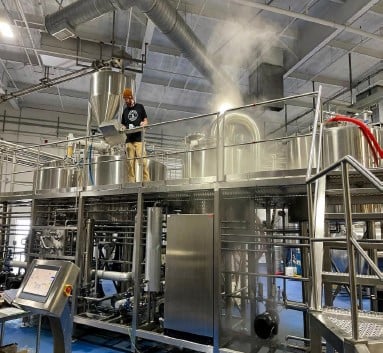
FAQ
Q: What is the best material for a fermenter?
A: Stainless steel is considered the best material due to its durability, ease of cleaning, and resistance to stains and odors. However, glass and food-grade plastic are also popular choices.
Q: How do I choose the right size boil kettle?
A: The size of your boil kettle should be at least 25% larger than your batch size to prevent boil-overs. For a 5-gallon batch, a 7.5 to 10-gallon kettle is recommended.
Q: Can I automate my grain brewing process?
A: Yes, there are various automated brewing systems available that can control temperature, timing, and other variables to simplify the brewing process.
Q: How often should I clean my brewing equipment?
A: Clean and sanitize your equipment after each use to prevent contamination and maintain the quality of your beer. Regular maintenance checks are also advised.
Q: What is the role of a hot liquor tank in brewing?
A: A hot liquor tank is used to heat and store water for mashing and sparging. Maintaining the correct water temperature is crucial for the efficiency of the mashing process.
Conclusion
Grain brewing equipment is the backbone of any successful brewing operation, whether you’re brewing at home or commercially. By understanding the different types of equipment, their functions, and how to maintain them, you can ensure a smooth brewing process and produce high-quality beer.
Choosing the right equipment and supplier can significantly impact your brewing experience. Consider the factors discussed in this guide to make informed decisions and enjoy the journey of crafting your own beer. Cheers to brewing!




